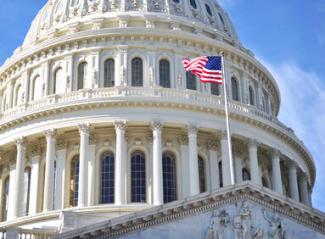
CARES Act: Understanding the Benefits
With the Coronavirus Aid, Relief and Economic Security Act (CARES) passed in hopes to stimulate the economy, it’s important to understand what the act means and what it can do for individuals who qualify for relief.
This virus has put health, jobs and the economy in jeopardy, so the goal of the Act is to help individuals, families and small businesses hopefully not get hit so hard from the implications of all of this. The following is a run-down of some important information about the stimulus actions provided through the act.
RMD Holiday and Offer Strategies
Required Minimum Distribution (RMD) requires people over 70 1/2 years old (72 under the new law passed last year) to take distributions. If you’re subject to RMDs that aren’t part of a defined benefit plan, you can skip them for 2020. This rule applies to first time RMDs due April 1 (held over from 2019), 2020 RMDs that aren’t due until December 31, inherited 401(k)s and inherited IRAs. This could be an opportunity to do some distribution planning, such as Roth conversions as accounts are down and RMDs are not required. RMDs that have already been distributed in 2020 can still be put back into an IRA in what is called an indirect rollover, provided you do so within 60 days.
If it’s not necessary to receive your RMD payments, it could be a strategic choice to stop the systematic distribution for now. Consider whether the RMD reprieve allows for additional tax planning opportunities, whether through Roth conversions or distribution planning as there won't be income tax consequences if you repay it.
Know Your Options when Seeking Relief from Debt Obligations
Because of the suddenness of the virus and its effects on the economy, many people may be experiencing a cash crunch. As a result, credit card companies have offered forgiveness, mortgage companies are foregoing interest, student loan forgiveness is available, and loans can be taken against investment accounts. If any of these apply to you, do some research to find out how these stimulus efforts could benefit you.
Penalty-Free Withdrawals from Qualified Retirement Plans and IRAs
Under the CARES Act, tax relief has been provided for retirement plan and IRA “coronavirus-related distributions” up to $100,000 taken on or after January 1, 2020 and before December 31, 2020. The act permits the following:
- In-service distributions
- Exception to the 10% early distribution penalty
- Exempts the distribution from the mandatory 20% withholding applicable to eligible rollover distributions
- Allows individuals to include income attributable to the distribution over a three-year period, and allows for the re-contribution of the distribution to a plan or IRA within three years.
In effect, the law allows you to borrow up to $100,000 from your IRA or any combination of IRAs and repay the amount anytime up to three years later with no federal income tax consequences. It is essentially an interest free loan for three years, that you can use in whichever way you would like.
Qualified Plan Loan Provisions Liberalized
Through December 31, 2020 the CARES Act has liberalized qualified plan loan provisions up to the lesser of $100,000 or 100% of the vested account balance. The due date for repayment of the loan is delayed for an additional year, which is normally five years.
Eligibility
For the withdrawal and loan relief provided in the CARES Act, an individual must fall within one of the following categories to be eligible:
- Individual, spouse or dependent is diagnosed with COVID-19
- Individual experiences adverse financial consequences as a result of COVID-19
It’s important to be aware of these options for financial relief as they offer a variety of opportunities. Be sure when making decisions you keep your long-term plans in mind as to stay on track with your goals.

